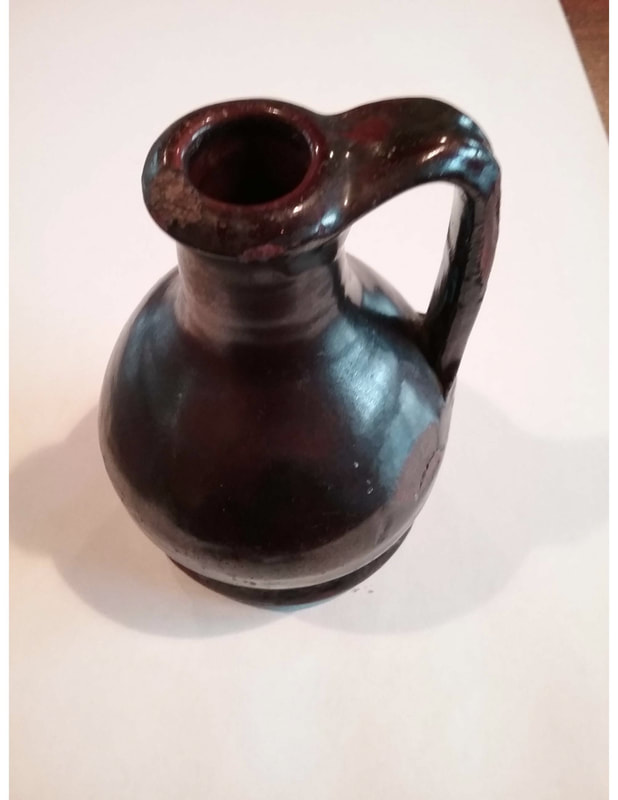|
Greetings from a very cool morning in Easton! Frost on the truck windshield was a reminder that we are indeed approaching the end of November. That also brings to mind the upcoming holiday celebrations. It comes as no surprise that things are very different this year. There will be no downtown celebration, but the Rockery will still be decorated and lit for the holidays. There will be no parade this year, no Reindog parade either. As I drive around town after dark, I have already seen a few Christmas trees up in people's houses, candles in windows, and even a few Christmas lights out. In a year when we put so much on hold, I think everyone is holding on to the traditions of their families to get a little hope and joy out of an otherwise dismal time.
Good news though! We will be hosting the Easton Garden Club for their annual Holiday greens sale on Saturday, December 5 from 9 a.m. to noon. Details are still being worked out, but everyone is encouraging pre-orders and curbside pickup. I'll have more information next week. Watch our social media and the Easton Garden Club's website for more up to date announcements and details ( https://www.eastongardenclub.org/happenings ). Each week I will be featuring something from our collections that I hope you will find interesting. Today, we will look at one of our earliest Colonial period pieces. Easton has a very diverse geography. The northern part of town is very rocky, hilly, and is full of hard volcanic rock. The southern part of town features nice loam and sand, and is relatively flat. The southeast corner of town is very wet, compliments of an ancient inland sea whose remnant is the Hockomock Swamp. This left behind soil filled with a high iron content, and also left behind a good quality clay. A wide vein of clay runs through South Easton all the way to Furnace Village, at times several feet thick. This clay, once discovered, led to a small brick making industry in the early to mid-1700's. Two places in particular were noted as brickyards by William Chaffin in his History of Easton. In 1886, when he was writing, the last vestiges of the former brickworks could still be seen. On Turnpike Street, in the area now occupied by the Easton Mobile Home Park, a brick manufacturing business was carried on in the early days of the town. A 1756 map places a Kinsley family at the site, and an 1825 map shows the property owned by members of the Drake family. Either family, or perhaps both families, made bricks on a small scale. A better known brickyard was run for many years by James Dean, who operated his business in and around the site of the current Pine Oaks Golf Club. A careful look into the woods around there will show disturbed ground where clay had been removed to make bricks, and it appears that Dean had a much more significant business going by 1754. Chaffin mentions bills in his possession for the sale of bricks at that time. Unfortunately, Chaffin does not record what he saw in the 1880's when he was researching Easton's history, and I am not sure the bills have survived. In the early days bricks were left to bake and harden in the hot sun, the same way they were made thousands of years ago. Perhaps Dean may have built a small kiln to bake bricks and make "other" clay items. If you have one of the really old houses in Easton, there is a good chance that the bricks in your chimney or beehive oven were made by one of these two people. It is the "other" clay item that we will take a quick look at today. Attached is a photo of a "juglet" or small clay jug found in Easton many years ago. It was found near the end of Center Street, north of the intersection of Depot Street. The jug measures 5" high and is 3 1/2" in diameter, with a 3/4" diameter mouth. A small handle on one side allows for pouring. A close look at the structure reveals that it was thrown on a potter's wheel as opposed to being made from a mold. This type of pottery is called "redware" and the clay gets its color from the iron content when it is fired. A glaze made from lead oxide (led ore is also found in Easton) and sand was applied after firing, and the whole piece is vitrified to hold liquid without leaking. A small jug like this one may have once held oil, vinegar, molasses, or some other small quantity of precious liquid. Jugs like this had been made the same way since Roman times. There is no mark on the jug to identify a maker, which leads me to believe that it was locally made right here in Easton. The 1756 map shows a home in the area where the jug was found owned by Benjamin Drake, one of several living in Easton during that time by that name. I can attest to the quality and quantity of the clay in Easton. As a young boy, digging in our yard on Foundry Street, we would hit a band of clay about two feet thick less than two feet under the surface. And as a young golfer, when playing Pine Oaks on the hot summer day, I always got a few extra yards out of my drives thanks to some bounces off of the very hard clay filled soil there. Stay well, and until next week, Frank
0 Comments
Your comment will be posted after it is approved.
Leave a Reply. |
Author
Anne Wooster Drury Archives
June 2024
Categories |
Easton Historical Society and Museum
PO Box 3
80 Mechanic Street
North Easton, MA 02356
Tel: 508-238-7774
[email protected]

